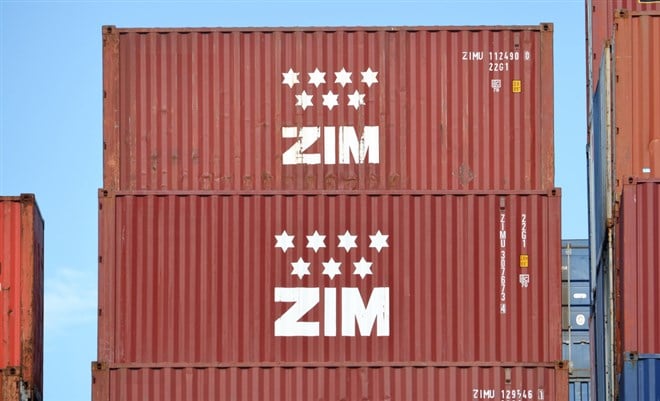 ZIM Integrated Shipping Services (NYSE: ZIM) offers an example of what’s befallen the once red-hot shipping industry in the past six months. The Israel-based company’s stock is down 33.58% in the past three months and down 17.48% year-to-date.
ZIM Integrated Shipping Services (NYSE: ZIM) offers an example of what’s befallen the once red-hot shipping industry in the past six months. The Israel-based company’s stock is down 33.58% in the past three months and down 17.48% year-to-date.Its wider industry has suffered a similar fate. Six months ago the shipping industry as a whole was among the leaders in the broader market. ZIM, along with peers such as Eagle Bulk Shipping (NASDAQ: EGLE) and Star Bulk Carriers (NASDAQ: SBLK) rallied to new highs in the middle of this year, then began rolling over.
Besides a few low-priced stocks with little trading volume, ZIM is the worst price performer within the shipping industry in the past 12 months.
So what went wrong?
As you might imagine, a large percentage of the industry’s fate is tied to China, where many products are manufactured and shipped around the world. Key to the tanker industry’s rebound is the full reopening of China, or at least an easing of restrictions. While that’s been anticipated for quite some time, it’s yet to happen on a large scale.
Recent lockdowns in some cities have only exacerbated worries, although the Chinese government has made statements to the effect that it may be backing off some of its most draconian restrictions.
ZIM specializes in international container shipping for a range of industries. It operates a fleet of over 100 vehicles, most of which are chartered. ZIM has been around for nearly 70 years, and went public in 2021, just in time for a big rally as the markets trended higher and economies opened up.
Container Rates Plummeting
One factor affecting ZIM: Spot rates for container shipping are decreasing.
The Drewry global composite index tracks bi-weekly ocean freight rate shipments of 40-foot containers in seven of the most significant maritime lanes. On Thursday, it dropped to $2,284, down 5% from the prior reading two weeks earlier.
The index has steadily declined all year. In January, it stood at $9,698. That’s a year-to-date industrywide decline of 76%.
When it comes to ZIM specifically, many investors get excited about the 131% dividend yield. The company pays out 30% of net income to shareholders as dividends. The stock has a Return on Equity of 191%, something you don’t see very often.
ZIM is clearly a stock with some mixed attributes. While the commitment to a 30% shareholder payout is attractive, the stock’s decline is less so. While the freefall may have been stemmed, at least for the moment, it’s generally not the best investing strategy to opt for dividend yield over price action. In other words, if a stock continues declining, or can’t muster up the strength for a rally, it’s probably best to avoid incurring the opportunity cost of that particular stock. 
Is A Big Rally Possible?
MarketBeat analyst data for ZIM show a consensus rating of “hold” on the stock, with a price target of $35.36, representing a 76% upside.
Is that kind of price gain likely in the next 12 to 18 months? Sure, anything is possible, but a lot of things would have to go right. Those include an easing of Covid restrictions in China, inflation cooling off, and recessionary fears receding.
ZIM’s earnings grew 795% in 2021. Analysts expect that to reverse this year, with a 2% decline to $38.01 per share. Next year, that’s seen declining by a whopping 88%, to $4.44 per share, pretty much back to 2020’s earnings.
It should come as no surprise that revenue has been slowing in the past four quarters, given the challenges facing ZIM and its entire industry.
Eventually, ZIM and its industry peers will reverse their declines. But that day has not arrived. Until it does, it’s probably wise to focus on industries and stocks already showing clear upside momentum.






